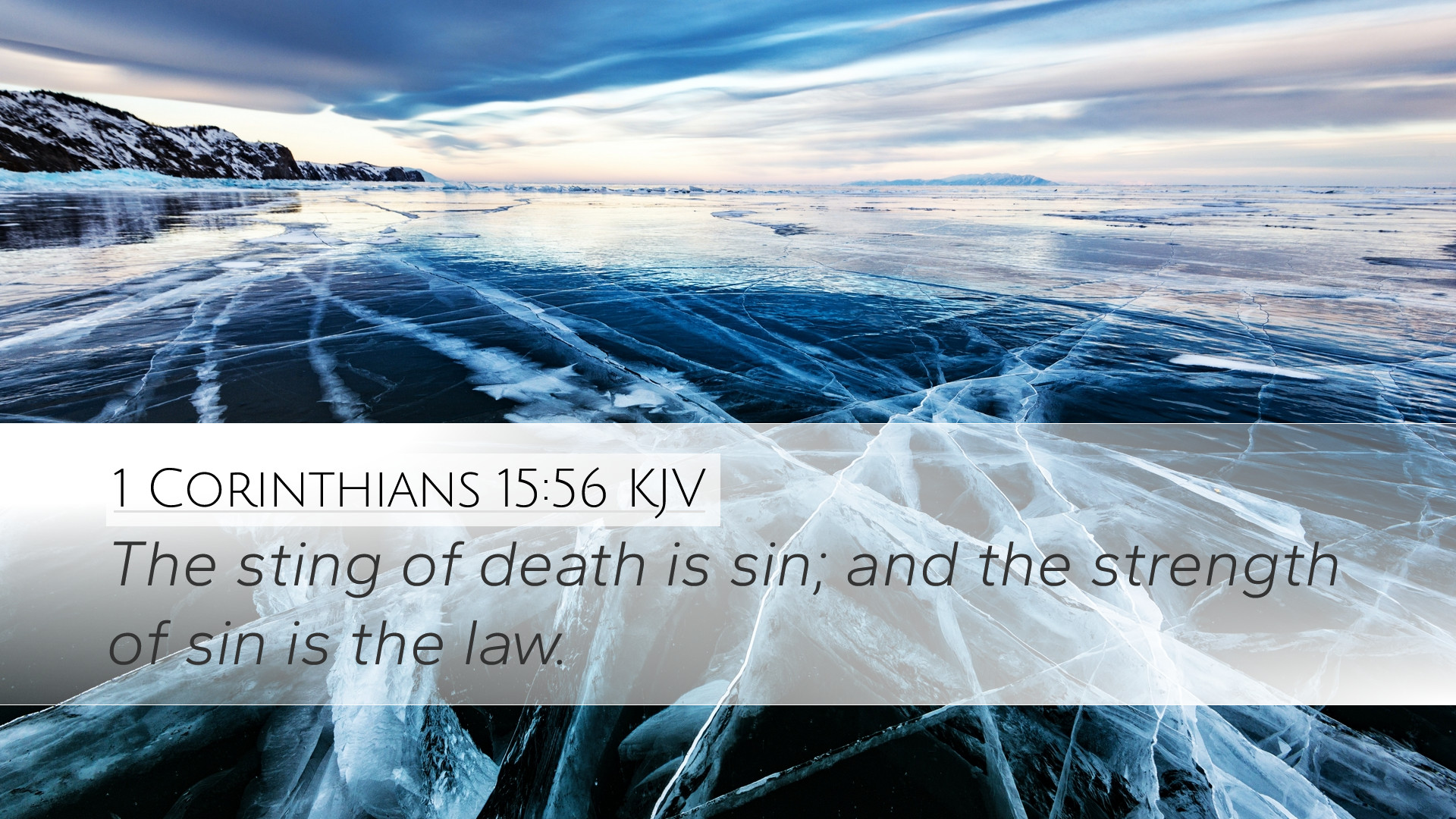Commentary on 1 Corinthians 15:56
Verse: "The sting of death is sin; and the strength of sin is the law."
Introduction:
This verse is part of the Apostle Paul's theological exposition in 1 Corinthians 15 regarding the resurrection of the dead. The apostle provides a profound explanation of the relationship between sin, the law, and death, emphasizing the significance of Christ's victory over these elements.
Understanding the Elements of the Verse
-
The Sting of Death:
The phrase "the sting of death is sin" underscores the notion that the cause of death's terror and anguish lies in sin itself. Matthew Henry elaborates on this by stating that death, in its essence, is not merely a physical end but a spiritual consequence directly connected to sin. Sin's offense brings forth death, thus making it a painful and dreadful reality for humanity.
-
The Strength of Sin:
The subsequent phrase "the strength of sin is the law" indicates that the law, while good and holy, effectively magnifies sin and its power. Albert Barnes discusses this, noting that the law reveals sin to humanity, helping us recognize our failures and transgressions. It is the law that gives sin its potency; without the law, there would be no knowledge of sin (Romans 7:7).
Theological Insights
This verse illustrates key theological insights regarding sin, death, and the redemptive work of Christ. The connection between these elements can be summarized as follows:
-
The Reality of Sin:
The first point to note is the fundamental nature of sin. Adam Clarke comments on the universality of sin, teaching that it has a grip on all humanity, leading to separation from God and eventual death. The experience of sin brings a profound sense of guilt and shame, serving as the "sting" leading to spiritual death.
-
The Impact of the Law:
Furthermore, the law serves as both a guide and a judge, illuminating the depths of human depravity. Adam Clarke elaborates further, emphasizing that the purpose of the law is not to save but to point to the need for a Savior. The law’s function amplifies the seriousness of sin, showcasing human inability to meet divine standards without grace.
-
The Gospel Implications:
Identifying the "sting of death" and the "strength of sin" invites believers to appreciate the gospel message. Paul uses this discourse to lead into the triumph found in Jesus Christ. He points out that where sin abounds, grace abounds much more (Romans 5:20), establishing a clear contrast between death in Adam and life in Christ (1 Corinthians 15:22).
Pastoral Applications
Understanding this verse has significant implications for pastoral ministry:
-
Preaching the Whole Gospel:
Pastors must address sin and its consequences to effectively articulate the need for grace. The reality of sin cannot be sanitized or downplayed; only through a clear understanding of sin's "sting" can the good news be truly appreciated.
-
Provide Hope:
In encouraging congregational hope, clergy can leverage Paul's affirmation of victory over death and sin through Christ. This message resonates profoundly with those battling sin, grief, or the fear of death, promoting an atmosphere of hope and assurance.
-
Teaching about the Law:
Educating the church about the role of the law fosters a balanced understanding of God’s Word. Both the law and the gospel must work together in the life of a believer, provoking a deeper dependency on and appreciation for the grace found in Christ.
Conclusion
In summary, 1 Corinthians 15:56 encapsulates a profound theological perspective on sin, the law, and the nature of death. This verse offers rich material for teaching, reflection, and application in ministry contexts. By understanding the dynamics at play in this scripture, pastors, students, and scholars can strengthen their faith and the faith of others through deeper comprehension of the redemptive work of Christ, transforming the sting of death into the assurance of eternal life.


